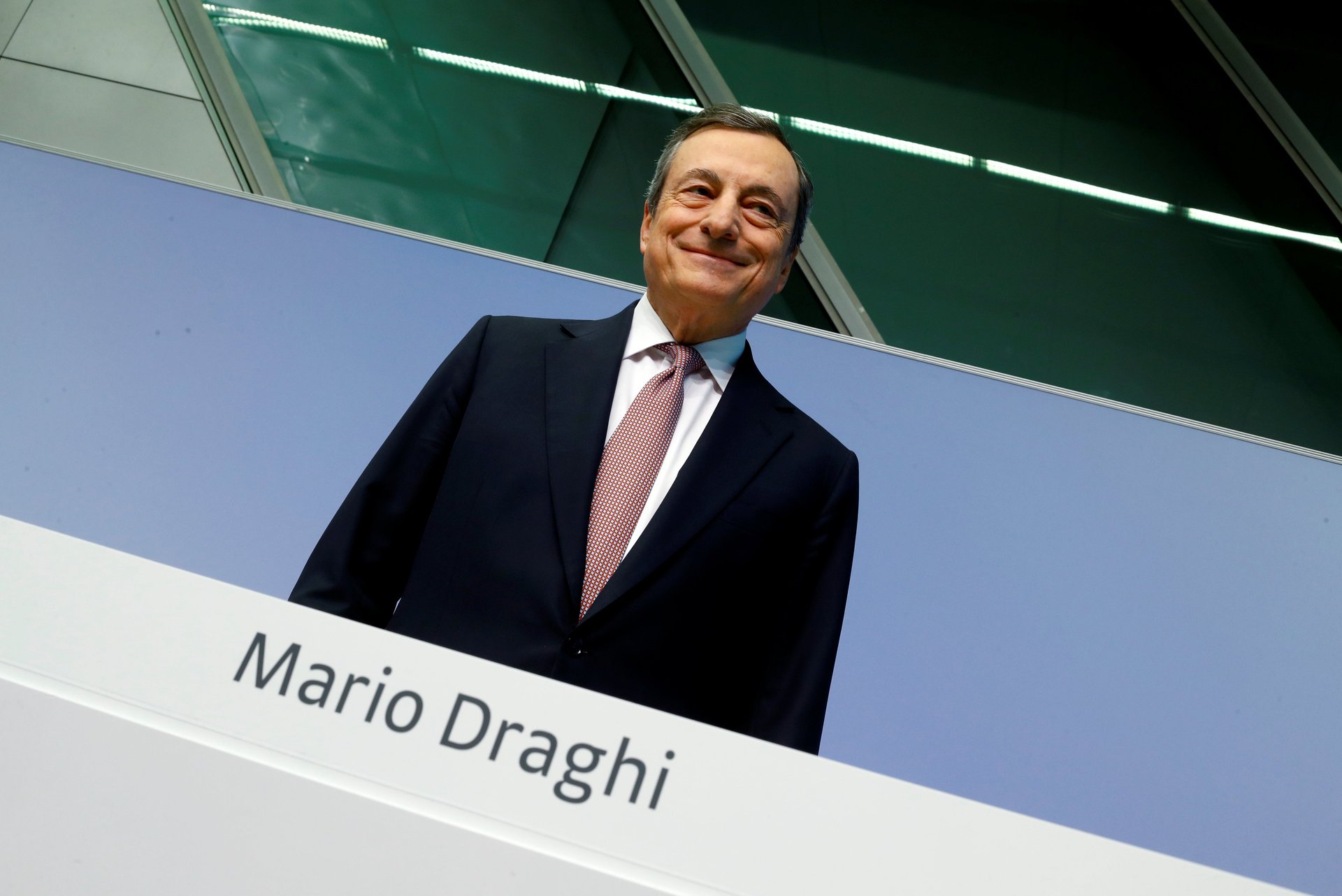The European Central Bank cut rates again, but will it matter?
Mario Draghi is going out with a bang. Earlier today (Sept. 12) the retiring president of the European Central Bank announced the bank was cutting its key interest rate by 0.1% to -0.5% and resuming the program of bond buying called quantitative easing. It is the ECBs most expansionary policy in three and a half years, and the bank promises more of the same “until it has seen the inflation outlook robustly converge” to its 2% inflation target, according to a statement.


Mario Draghi is going out with a bang. Earlier today (Sept. 12) the retiring president of the European Central Bank announced the bank was cutting its key interest rate by 0.1% to -0.5% and resuming the program of bond buying called quantitative easing. It is the ECBs most expansionary policy in three and a half years, and the bank promises more of the same “until it has seen the inflation outlook robustly converge” to its 2% inflation target, according to a statement.
Draghi said during a press conference following the announcement the moves were to compensate a downgraded inflation outlook. He noted that unemployment was low, wage growth was robust, and the risks of recession are small. But he cited risks that threaten the economy, from geopolitical risk, threat of trade wars, and weaknesses in emerging markets—all of which have led to a downgrading of inflation expectations.
But there has been some pushback on the decision. While the economy is robust, it is not clear that lower rates—especially negative rates—and quantitative easing will have a meaningful impact on inflation expectations. The evidence is mixed that quantitative easing is an effective policy. A 0.1% rate cut is like a band aid on a gapping laceration of a trade war. Some argue negative rates—in which investors pay for the right to store money in banks or buy bonds—could even be harming the economy, by reducing bank profitability, reducing the wealth of consumers, and making pension benefits more expensive. Draghi insists that negative rates have been a successful policy because it increases lending, though he says concerns about negative side effects are “well placed.” He argues the package is adequate to revive inflation expectations.
But with more pushback from Germany on negative rates and uncertainty policy will work as intended, the ECB could be straining the support for its independence. Christine Lagarde’s excellent political skills will be tested when she takes over Nov. 1.